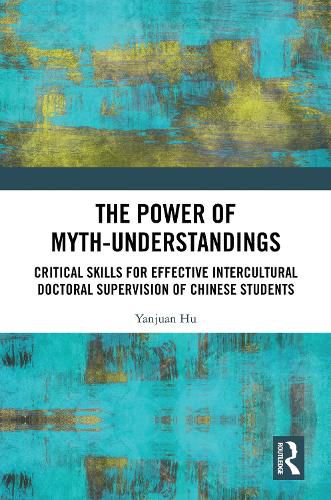Readings Newsletter
Become a Readings Member to make your shopping experience even easier.
Sign in or sign up for free!
You’re not far away from qualifying for FREE standard shipping within Australia
You’ve qualified for FREE standard shipping within Australia
The cart is loading…






The book addresses the misunderstandings and implicit stereotypes that continue to arise in and influence the intercultural encounters of staff and international doctoral students.
In addition to providing real-life examples, the author demonstrates that misunderstandings recur due to a lack of implicit and complex intercultural knowledge and practical tools for applying this knowledge in daily practice. She proposes the concept of "myth-understanding" to describe a temporary and transitional state of clarity deficiency before misunderstandings arise, which helps to create a "buffer zone" to address potential misunderstandings between international students and their supervisors. Instead of focusing on the negative aspects of misunderstandings, the book sheds light on the positive side-it indicates that intercultural differences can provide an opportunity for both supervisors and students to develop implicit intercultural knowledge, challenge their preconceptions of each other, and reassess their own educational perspectives and practices.
The book will attract scholars of intercultural education, European university staff and professors who interact with international students, intercultural education officers, and doctoral students with an international (especially Asian) background.
$9.00 standard shipping within Australia
FREE standard shipping within Australia for orders over $100.00
Express & International shipping calculated at checkout
The book addresses the misunderstandings and implicit stereotypes that continue to arise in and influence the intercultural encounters of staff and international doctoral students.
In addition to providing real-life examples, the author demonstrates that misunderstandings recur due to a lack of implicit and complex intercultural knowledge and practical tools for applying this knowledge in daily practice. She proposes the concept of "myth-understanding" to describe a temporary and transitional state of clarity deficiency before misunderstandings arise, which helps to create a "buffer zone" to address potential misunderstandings between international students and their supervisors. Instead of focusing on the negative aspects of misunderstandings, the book sheds light on the positive side-it indicates that intercultural differences can provide an opportunity for both supervisors and students to develop implicit intercultural knowledge, challenge their preconceptions of each other, and reassess their own educational perspectives and practices.
The book will attract scholars of intercultural education, European university staff and professors who interact with international students, intercultural education officers, and doctoral students with an international (especially Asian) background.